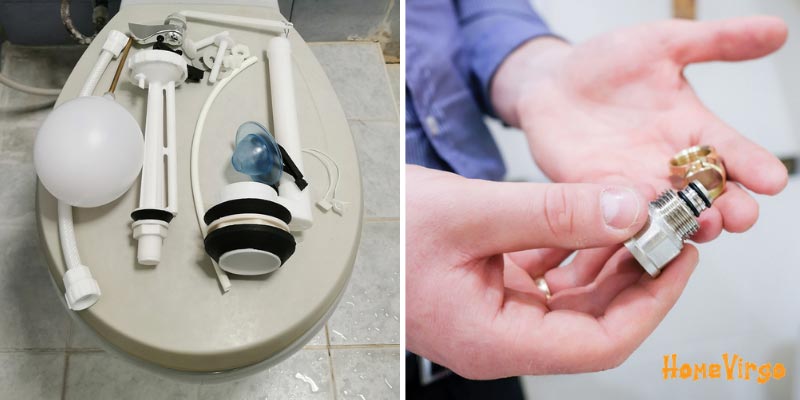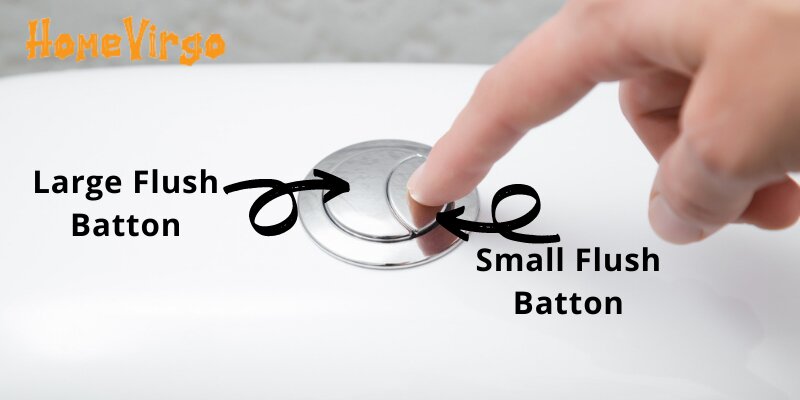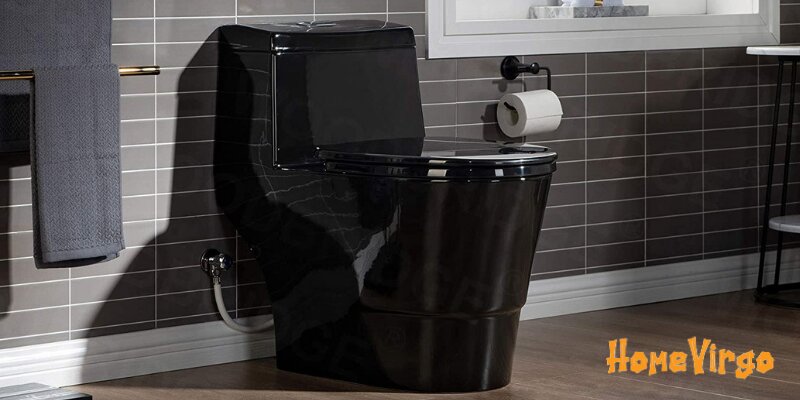Best Toilet Flushing System – Push Button Vs Handle Flush

Best Toilet Flushing System
What is the best toilet flushing system? Are there new flushing systems that I don’t know about? If you’re searching for the best flushing mechanism in the market, I’m delighted to tell you that we’ve done some extensive research on this topic. There are several different types of flushing mechanisms that are available these days, and I’ve got news for you, it’s not just the same old handle type that we’ve all become so used to.
There are buttons, handles, remote-controlled and even automatic flushing systems that have been developed. If you’ve never heard of some the newer inventions then I suggest having a look at them, cause of them are quite spectacular, but for now, we’ll dive in the details of the two most well-known types of flushing system. We’ll have to cover the others in times to come.
Push Button Vs Handle Flush
These types of flushing mechanisms are the most common and have been around for quite a while. They are old but not obsolete; the push-button type is more recent and has developed over the years into an efficient water-conserving toilet that is favored by millions of people worldwide, and the handle flush is the most widely used type of system because it has been around forever. So let’s take a look at the details of these two systems.
What is a Push Button Toilet?
A push-button mechanism is a system that requires the push of a button to trigger a flush, as the name suggests. The push-button toilet has two buttons for two different flushes. A full flush or a half flush. The cistern of the toilet has two different valves in it to allow different amounts of water out of the tank depending on the button that has been pushed. The valves regulate a specific amount of water that is allowed to flow through the valve and then it closes.

The smaller button on the cistern triggers the half flush which is usually set to 3 liters per flush, whereas the bigger button triggers the full flush which is set to 6 liters per flush. These toilets are designed to conserve water as best as they can.
What is a Handle Flush Toilet?
This type of system works off a handle to trigger a flush and is normally connected to the valve via a chain, which is where the saying “flushing the chain” came from. The handle is located on the side of the cistern and needs to be pushed down to activate the valve. Once the “chain” is pulled the valve and flapper open allowing water to flow out of the tank and into the bowl. The flowing water creates a siphoning effect which pushes the waste down into the drainage pipes to be disposed of.
Advantages and Disadvantages
Each version has its pros and cons, and both are effective for household use. It wouldn’t be recommended to use these toilets in public restrooms or corporate settings anymore. With the invention of pressure toilets and automatic toilets, it is recommended that for high-frequency use, these types be chosen instead. So let’s look now at what the differences are between the push button and the handle flush.
Flushing Power
The push-button toilet mechanism has two options of flush, a half or full flush. If the full flush is triggered then a more powerful flush will be delivered because there is more volume of water flowing into the bowl at once. If the half flush is activated then the flush is significantly weaker due to less water flowing out the tank. The full flush is intended for solid waste and the half flush is intended for liquid waste; therefore not needing as much pressure for the half flush.

The handle flush system only has one option and that’s a full flush. A full gravity-assisted flush is powerful enough to remove a decent amount of waste from the bowl and doesn’t usually require a second flush. However, the full flush on a handle system is slightly less powerful than that of a push-button system. This is because of the structure of the toilets, which we will discuss shortly, but the gist of it is that the push button has better water flow and less resistance.
Strength and Reliability
The strength of the buttons on a push-button system is hugely important to the lifespan of the toilet. If the buttons stop working then you can no longer flush the toilet, until the button fixture has been replaced. The buttons are relatively sturdy and don’t break easily. They are encased in a circular guard that guides them up and down; this prevents the buttons from moving around too much and getting damaged. The problems that might develop over time are where the springs are concerned; the springs might get covered in water vapor causing them to rust and break. If the springs are made from stainless steel then this probably won’t happen but otherwise, it has been known to happen.
In comparison to the buttons of the push-button system, the handle flush struggles to compete. The handle itself is normally strong and sturdy but the chain attachments are where the problems come alive. Most people who have used handle flush toilets for a long time know the experience of having to reconnect a chain or create a new method to attach the handle to the valve. The chains are pretty strong but they can fall off or can come loose because the attachments are flimsy.
Otherwise, the handle system is reliable and has proven its robust system to be efficient by the many years it has endured in the bathroom industry. Overall, the push-buttons are probably more durable because of the lower amount of stress that they are subjected to. With the handle system, people tend to put a lot of force on the handle, meaning that it is more likely to break after consistent use.
Structure and Design
The design features are fairly similar between these two types of toilets with a few differences that affect the functionality of the flushing system. The push-button system has a larger trap way at the bottom of the bowl than a handle flush does. The larger trapway allows for waste to travel out of the bowl more readily, and reduces the resistance that the water faces when flowing out of the bowl into the drains. The large trapway creates a bigger siphoning effect which pulls the waste down more forcefully.
The trapway on a handle flush toilet is smaller to reduce the chance of blockages and clogging. At its inception, the handle flush toilet was used in conjunction with small drainage pipes that were cheap and efficient in terms of space. The smaller trapway meant that less waste would go down the drain at any given moment and so reducing the chance of clogging up the small drains.
Nowadays this comes at a disadvantage because larger pipes are now used more frequently and are generally more preferable for house construction and plumbing. However, many houses have old drainage systems still and so if there is ever a toilet replacement and a new push-button toilet is installed then the chances are that the drains will get blocked at some point. So the larger trapway provides a stronger flush to push more waste down than a small trapway but with a catch, so if you ever wish to get a push-button toilet then make sure to check the pipes.
Water Usage and Conservation
The biggest advantage of a push-button system is the water conservation integrated into its design. Most toilets use between 6 and 7 liters per flush, which amounts to huge water bills at the end of the month. Whereas with a push-button model you can opt for the half flush which only uses 3 liters per flush. This type of flush is used for liquid waste which is what is required 75% of the time.

After switching from a handle flush to a push-button system, people have been known to use up to 40% less water than what they previously used with the handle flush toilet. A handle flush toilet lacks heavily in this department and so what has been done of late, is to fit the tank with a water-saving regulator, which prevents the toilet from using too much water. So instead of having to buy an entire toilet, you can fit it with this to optimize your water usage.
Price
The cost of a push toilet is slightly higher than a standard toilet but it is probably worth the expense in the long run. With all the water that you will save using a push-button toilet, the cost kind of becomes unimportant, and yes no one likes to have to fork out a lump sum of money for a bathroom installment, but it might be one of the wiser things to do as far as household saving goes.
The higher-end handle toilets can also be rather expensive because of the more technical gravity-assisted system that gives the toilet better flushing power. These toilets are very reliable but the one thing that they can’t do is to save water. So in regards to time-cost efficiency, you might not find a better deal than the push-button toilet.
The cost of repairs is more expensive for the push system because the spare parts are more complex and the labor for fixing the problem is higher unless you decide to fix it yourself. Replacement parts for handle flush systems are so easy to find are fairly cheap; they are also easy to replace yourself, which saves extra money for labor.
Maintenance
Every toilet should be maintained regularly if you want it to last a while, and if you want to prevent the common mishaps that cause so much frustration to so many people. The maintenance of a toilet, contrary to popular belief, is not a difficult thing. It takes a couple of minutes every few days and then it’s done and dusted. The important parts to check are the inside of the bowl, inside the tank, and the valves. The bowl needs to be clean of course but the part that you might want to keep an eye on are the small holes in the rim of the toilet, under the seat. These holes allow the water to flow from the tank into the bowl and if they get blocked then the flushing power will be reduced from the weaker siphoning effect.
When checking the inside of the tank it’s a good idea to drain the entire tank and switch off the inlet hose, then inspect to see if there is dirt caught up in the valves and flappers and then once you have polished it up, pour some boiling water over the pipes and valves and then turn on the inlet hose tap once again. Both toilets have the same maintenance needs and can be cleaned and taken care of very easily. The only difference is that the push button has a larger valve system which would take more time to clean and inspect.
Which is Better?
Overall it’s hard to say which is best. Each has its advantages and disadvantages and both are brilliant toilets, to say the least. The only thing that would make us decide on one over the other is the cost. The handle flush system is cheaper which would usually be the one to go for but not in this scenario. The stand-out toilet has to be push-button, not because it’s cheaper to install but because it is more cost-effective on water usage. The water bill is a big one and to have it reduced by 40% is a dream come true, for that reason it would be our winner.
Final Thoughts
At the end of the day, the voice is yours. We’ve laid the foundations and now you have to build on it. You know enough to make the right choice for your needs. Each toilet might have a different set of functions but you’ll get the most out of either one regardless o the decision. The only thing that might affect the biggest change is the water conservation, so if that’s what you’re after then the push button is the best toilet flushing system for you otherwise go old school it won’t let you down. People have been using them for decades upon decades, and trust me – people will continue to use them for decades to come. They are one of those things that will never die.




